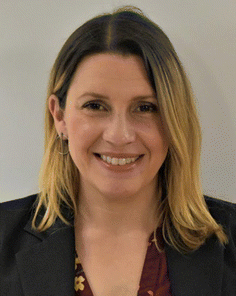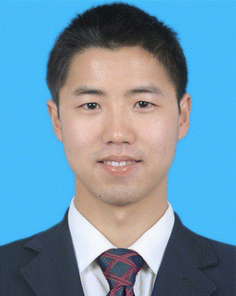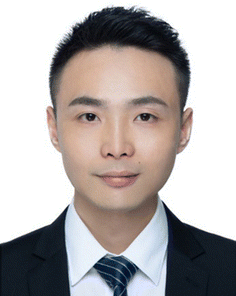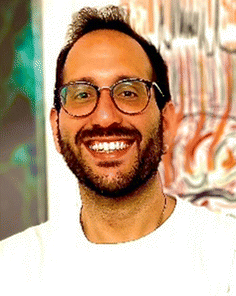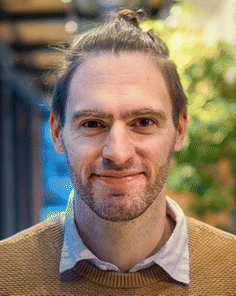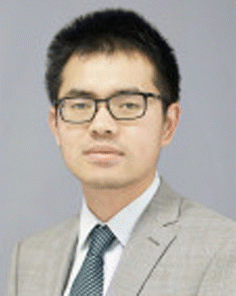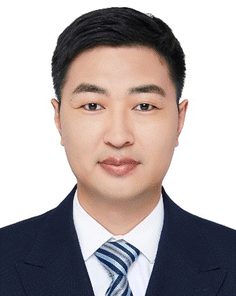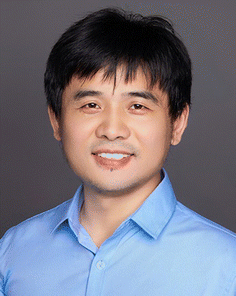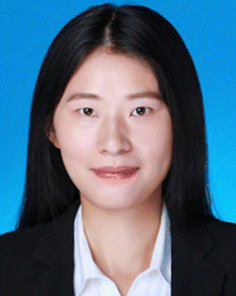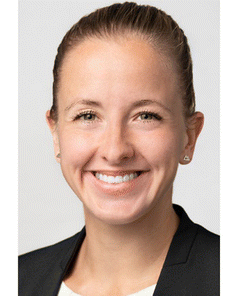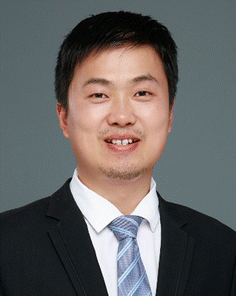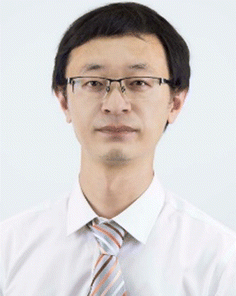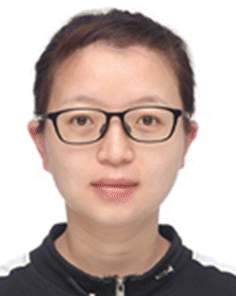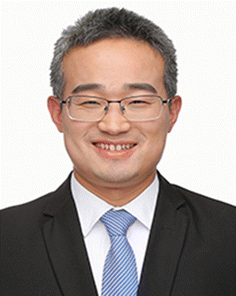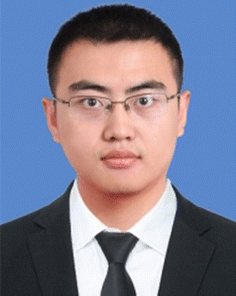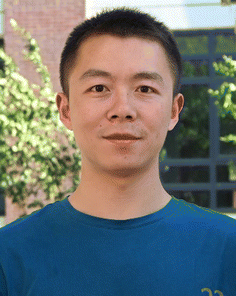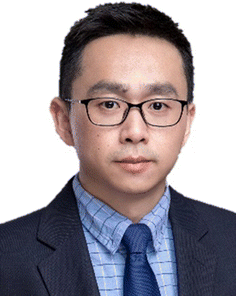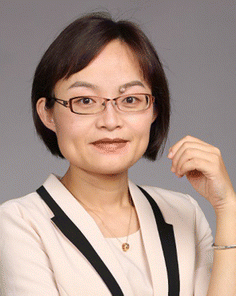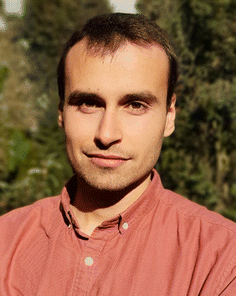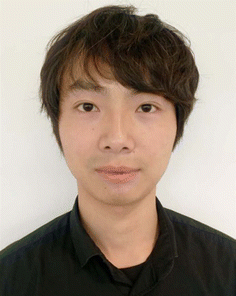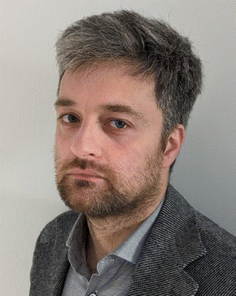Contributors to the Journal of Materials Chemistry C Emerging Investigators 2024 collection
Abstract
Our 2024 Emerging Investigators themed collections gather some of the best research being conducted by scientists in the early stages of their independent career. Each contributor was recommended as carrying out work with the potential to influence future directions in materials chemistry. Congratulations to all of the researchers featured, we hope you enjoy reading this collection.
Ivana Aguiar, PhD in chemistry, is an associate professor at the Universidad de la República, Facultad de Química, Uruguay. With a profound dedication to fostering a sustainable world, she specializes in synthesizing nanoparticles and exploring their applications, particularly their interaction with various forms of radiation. Ivana has been thoroughly involved with the materials science and technology community through her participation in research societies, and has established a network of collaborations to develop interdisciplinary research topics in her country. She has also been instrumental in organizing the first two Materials Science Researchers Meetings in Uruguay. Alongside her teaching responsibilities in materials science and nanotechnology, she actively engages in outreach activities to connect with the wider community.
Her contribution to the 2024 Journal of Materials Chemistry C Emerging Investigators collection can be read at DOI: https://doi.org/10.1039/D4TC01480D.
Michele Back is a tenure track assistant professor in chemical sciences at the Department of Molecular Sciences and Nanosystems, Ca' Foscari University of Venice. He completed his MS in materials science in 2013 and PhD in chemical sciences in 2017. He then undertook a JSPS postdoctoral fellowship at Kyoto University (2017–2019) with Prof. Setsuhisa Tanabe. He was a research fellow at the Centro di Riferimento Oncologico (CRO) IRCCS, Aviano (2020–2021) and a research scientist at NIMS as a JSPS invitational fellow (2023). The goal of his research is the establishment of structure–luminescence relationships to develop models able to predict optical properties. His current research interests focus on the fundamental aspects and development of luminescent inorganic (nano-)materials for optoelectronic and sensing applications.
His contribution to the 2024 Journal of Materials Chemistry C Emerging Investigators collection can be read at DOI: https://doi.org/10.1039/D4TC01386G.
Hedan Bai has been an assistant professor of robotic materials in the Department of Materials at ETH Zurich since 2023. She received her BS degree from Cornell University with double major in mechanical engineering, and operations research and information engineering in 2016. She obtained her MS degree and PhD (2021) in mechanical engineering from Cornell University, where her thesis covered multimodal and self-healing soft optical sensors. In 2021, she joined the Querrey Simpson Institute for Bioelectronics as a postdoctoral fellow at Northwestern University, working on soft robotic bioelectronics for minimally invasive surgery. Her research interests center around developing robotic materials with physical intelligence to realize devices with advanced biomedical and robotic functions.
Her contribution to the 2024 Journal of Materials Chemistry C Emerging Investigators collection can be read at DOI: https://doi.org/10.1039/D4TC01868K.
Connor Bischak is an assistant professor in the Department of Chemistry at the University of Utah. He received his PhD from UC Berkeley (2017) with Prof. Naomi Ginsberg. He then carried out postdoctoral research at the University of Washington with Prof. David Ginger as a Washington Research Foundation Postdoctoral Fellow and a Cottrell Postdoctoral Fellow. His research interests include organic and hybrid semiconductors, mixed conductors, structural phase transitions, nanoscale imaging, and self-driving chemical laboratories.
His contribution to the 2024 Journal of Materials Chemistry C Emerging Investigators collection can be read at DOI: https://doi.org/10.1039/D4TC01029A.
Xu-Min Cai is an associate professor at Nanjing Forestry University (NJFU). She received her Master's degree and PhD from Nanjing University and Technical University of Munich, respectively. Afterwards, she joined NJFU at the College of Chemical Engineering in 2016, initiating multidisciplinary research on biomass-based aggregation-induced emission materials. She has published several representative papers in Nat. Commun., Natl. Sci. Rev., Adv. Sci., Aggregate, Chem. Sci., etc., with some promoted by news presses like AurekAlert and National Science Review. She is a young editorial board member for journals like The Innovation and Biomass Chemical Engineering.
Her contribution to the 2024 Journal of Materials Chemistry C Emerging Investigators collection can be read at DOI: https://doi.org/10.1039/D4TC01287A.
Zhengxu Cai received his BS degree from Wuhan University in 2009, and obtained his PhD from the Institute of Chemistry, Chinese Academy of Science in 2014 under the supervision of Prof. Deqing Zhang. After post-doctoral study in Prof. Luping Yu's group at the University of Chicago, he joined the School of Materials Science and Engineering at Beijing Institute of Technology (BIT) in 2017. He is now a professor at BIT. His research focuses on host–guest doping systems towards organic room-temperature phosphorescence (RTP). He has developed a series of high performance RTP materials for anti-counterfeiting and high-resolution bioimaging.
His contribution to the 2024 Journal of Materials Chemistry C Emerging Investigators collection can be read at DOI: https://doi.org/10.1039/D4TC01828A.
Jianhua Chen obtained his PhD from Xiangtan University in 2016, under the supervision of Prof. Weiguo Zhu. From 2016 to 2018, he worked as a postdoctoral scholar in the lab of Prof. Xugang Guo at the Southern University of Science and Technology. He then completed his postdoctoral training with Prof. Tobin J. Marks and Prof. Antonio Facchetti at Northwestern University before joining Yunnan University as an associate professor in 2021. His research focuses on polymer semiconductors and devices.
His contribution to the 2024 Journal of Materials Chemistry C Emerging Investigators collection can be read at DOI: https://doi.org/10.1039/D4TC01226G.
Ming Chen received his PhD from Zhejiang University in 2015 under the supervision of Prof. Ben Zhong Tang and Prof. Anjun Qin. Later, he conducted postdoctoral research in Prof. Tang's group at HKUST from 2015 to 2018. In June 2018, he joined Jinan University as an associate professor. His research focuses on the development of functional dyes for imaging and therapeutic applications based on pyrazine building blocks through multiple approaches (including small-molecule engineering, supramolecular chemistry and polymerization strategy).
His contribution to the 2024 Journal of Materials Chemistry C Emerging Investigators collection can be read at DOI: https://doi.org/10.1039/D4TC01374C.
Wen-Cheng Chen is currently an associate professor at the School of Chemical Engineering and Light Industry at Guangdong University of Technology (GDUT) and concurrently holds a senior research position at the Guangdong Provincial Laboratory of Chemistry and Fine Chemical Engineering Jieyang Center. He received his doctoral degree in chemistry from the City University of Hong Kong (CityU) in 2018 under the supervision of Prof. Chun-Sing Lee. Before joining GDUT, he worked as a senior research associate at the Center of Super-Diamond and Advanced Films (COSDAF) of CityU. His research interests are focused on the design and synthesis of organic luminescent materials for organic light-emitting diodes, anticounterfeiting/encryption, and bioimaging.
His contribution to the 2024 Journal of Materials Chemistry C Emerging Investigators collection can be read at DOI: https://doi.org/10.1039/D4TC00988F.
Xiaosong Chen graduated from Central China Normal University in 2011 with a Bachelor's degree in physics. He obtained a PhD in science from the East China Normal University in 2016. From 2016 to 2019, he was engaged in postdoctoral research at Fudan University and Shenzhen University. In 2019, he joined Tianjin University as an associate researcher. His research direction focuses on the device physics and stability of organic field-effect transistors. To date, he has published 21 SCI papers (including one in Science Advances, three in Nature Communications, and two in Advanced Materials) as the first or corresponding author.
His contribution to the 2024 Journal of Materials Chemistry C Emerging Investigators collection can be read at DOI: https://doi.org/10.1039/D4TC01364F.
Won Jin Choi was born in the Republic of Korea. He received his BS and MS degrees from Yonsei University in Seoul. He then moved to Daejeon to work at the KRICT as a staff scientist. Subsequently, he relocated to Ann Arbor, MI, USA, to pursue his PhD under the supervision of Prof. Nicholas A. Kotov. In Michigan, Won Jin studied terahertz optics and kirigami metamaterials, which he is currently working on after graduation and as a Lawrence fellow at LLNL. Resonance phenomena are everywhere, and he is seeking more with light.
His contribution to the 2024 Journal of Materials Chemistry C Emerging Investigators collection can be read at DOI: https://doi.org/10.1039/D4TC01502A.
Ryan W. Crisp studied engineering physics and applied physics at the Colorado School of Mines in Golden, Colorado, for his BSc and MSc. He obtained his PhD in applied physics in 2015 after researching the optoelectronic properties, fabrication, and characterization of QDs and nanocrystals for solar cells with Prof. Joseph M. Luther at the National Renewable Energy Lab (NREL). He then went abroad to TU Delft as a postdoc with Prof. Arjan Houtepen studying synthesis, spectroscopy, and charge carrier transport in QDs. Now he is working towards his habilitation at Friedrich Alexander University Erlangen-Nürnberg (FAU) with Prof. Julien Bachmann and leading his group to explore synthesis of new materials and developing new processes for application in photo-driven chemistry.
His contribution to the 2024 Journal of Materials Chemistry C Emerging Investigators collection can be read at DOI: https://doi.org/10.1039/D4TC01414F.
Xiaojing Cui is an associate professor at Shanxi Normal University, China. She received her PhD in electronic science and technology from Taiyuan University of Technology in 2021. During the period of 2019 to 2020, she studied as a joint-training doctoral candidate at the Georgia Institute of Technology, USA. Her research interests include thermogalvanic devices and self-powered sensors based on diverse hydrogels.
Her contribution to the 2024 Journal of Materials Chemistry C Emerging Investigators collection can be read at DOI: https://doi.org/10.1039/D4TC01418A.
Antonio Dominguez-Alfaro is a multidisciplinary scientist working at the interface between chemistry, engineering, manufacturing, and biology. He obtained his BSc and MSc degrees in chemical and industrial engineering from the University of Huelva and completed his PhD in applied chemistry at the University of the Basque Country in 2021 under the supervision of Prof. David Mecerreyes and Prof. Maurizio Prato. He started his postdoctoral research at CIC biomaGUNE with Prof. Aitziber Cortajarena, focusing on the synthesis of conducting protein hybrids. Later, he moved to the University of Cambridge (UCAM) as a Margarita Salas fellow to work with Prof. George G. Malliaras. Since October 2023, he has been a Research Associate at UCAM interested in changing the paradigms of the fabrication of devices, in particular for bioelectronics, using a material chemistry approach.
His contribution to the 2024 Journal of Materials Chemistry C Emerging Investigators collection can be read at DOI: https://doi.org/10.1039/D4TC02908A.
Mary J. Donahue received her BSc in electrical engineering, a BSc in computer science, and a MSc in electrical engineering from Texas Tech University (USA). In 2006 she was awarded a Fulbright Scholarship to work at the Center for Micro- and Nanotechnology at the Technical University of Ilmenau, Germany, where she subsequently completed her PhD. In 2014, she joined the Department of Bioelectronics at the Ecole Nationale Supèrieure des Mines de Saint Étienne in France as a postdoctoral fellow. In 2020, Mary joined the Laboratory of Organic Electronics at Linköping University, Sweden, where she currently carries out her research interests including materials and technology development for neural interfacing applications.
Her contribution to the 2024 Journal of Materials Chemistry C Emerging Investigators collection can be read at DOI: https://doi.org/10.1039/D3TC04730J.
Ke-Zhao Du received his PhD in 2013 from Fujian Institute of Research on the Structure of Matter, Chinese Academy of Sciences, China, under the supervision of Prof. Xiaoying Huang. After that, he worked as a postdoctoral researcher in Nanyang Technological University, Singapore and Duke University, USA. In 2018, he joined Fujian Normal University, China, as a professor. His research interests focus on the crystal structure–property relationship study of metal halides and their applications for energy transformation.
His contribution to the 2024 Journal of Materials Chemistry C Emerging Investigators collection can be read at DOI: https://doi.org/10.1039/D4TC01344A.
Xiuwei Fu is currently a full professor at the Institute of Crystal Materials, Shandong University. He received his BS and MS degrees from Shandong University in 2010 and 2013, respectively, and completed his PhD in 2016 from Waseday University under the supervision of Prof. Kiyoshi Shimamura. Then he worked at the National Institute for Materials Science (NIMS) for postdoctoral research from 2016 to 2019. His current research interest is focused on the design and growth of novel bulk single crystals for piezoelectric, magneto-optical and laser applications.
His contribution to the 2024 Journal of Materials Chemistry C Emerging Investigators collection can be read at DOI: https://doi.org/10.1039/D3TC04069K.
Nicola Gasparini received his BSc and MSc, in chemistry and organic chemistry, and photochemistry and molecular materials, respectively, from the University of Bologna, Italy. In 2014 he joined the group of Prof. Brabec at the Institute of Materials for Electronics and Energy Technology (i-MEET) at the Friedrich Alexander University Erlangen-Nürnberg (FAU) and received his PhD in 2017. In September 2017, he joined the King Abdullah University of Science and Technology (KAUST) as a postdoctoral fellow. In September 2019, he moved to the Department of Chemistry of Imperial College London as an independent researcher holding the Imperial College Research Fellowship. In early 2022, Nicola was appointed Lecturer in Chemistry (assistant professor, tenured) in the Department of Chemistry. His research interests are in organic and perovskite semiconductors, with particular interest in charge transport and recombination processes in solar cells and photodetectors.
His contribution to the 2024 Journal of Materials Chemistry C Emerging Investigators collection can be read at DOI: https://doi.org/10.1039/D3TC04678H.
Elham Ghadiri received her PhD in nanoscience and nanotechnology from Sharif University of Technology in 2010. She obtained a PhD in chemistry in 2014 from Ecole Polytechnique Federal de Lausanne (EPFL) in Switzerland under the supervision of Prof. Michael Grätzel and Prof. Jacques Moser. She joined Prof. Warren S. Warren at Duke University as a postdoctoral researcher. In 2018, she became an assistant professor in the Department of Chemistry at Wake Forest University. Her expertise is in ultrafast laser microscopy-spectroscopy technique development, nanomaterials synthesis and device fabrication for solar energy conversion, optoelectronics and bioelectronics. She was awarded as the TERMIS-WFIRM young investigator of the tcollection engineering and regenerative medicine international society in 2017. She earned the NSF CAREER award in 2023.
Her contribution to the 2024 Journal of Materials Chemistry C Emerging Investigators collection can be read at DOI: https://doi.org/10.1039/D4TC01512F.
Samuele Giannini received his MSc in chemistry in 2016 from the University of Pisa (Italy), where he worked in the group of Prof. Benedetta Mennucci. He then moved to the UK, where he pursued his PhD at University College London (UCL) under the supervision of Prof. Jochen Blumberger. In London, he worked on modelling electronic transport processes in nanoscale organic semiconductors. Dr Giannini completed his PhD in December 2020 and was awarded the Marshall Stoneham Prize for the best PhD thesis in Condensed Matter & Materials Physics from UCL. After a short postdoctoral stay at UCL, in March 2021, he joined the group of Prof. David Beljonne in the Laboratory for Chemistry of Novel Materials (CMN) at the University of Mons (Belgium). During his stay in Mons, he was awarded a Chargé de Recherches Fellowship from the FNRS. Currently, Samuele is back in Pisa as a staff researcher at the Italian National Research Council (CNR). In 2024, he was awarded a Marie Skłodowska-Curie Actions Postdoctoral Fellowship to carry on his research on the electronic and transport properties of both natural and artificial systems.
His contribution to the 2024 Journal of Materials Chemistry C Emerging Investigators collection can be read at DOI: https://doi.org/10.1039/D4TC01716A.
Alexander Giovannitti is an assistant professor at Chalmers University of Technology (Department of Chemistry and Chemical Engineering), Gothenburg, Sweden. He holds a Diploma in chemistry (Karlsruhe Institute of Technology (KIT), Germany), a Master of Research and a PhD in physics (Department of Chemistry and Physics, Imperial College London, UK). As an EPSRC Doctoral Prize Fellow, he joined the group of Prof. Jenny Nelson from 2018–2019 (Department of Physics, Imperial College London), followed by joining the group of Prof. Alberto Salleo (Department of Materials Science and Engineering, Stanford University, USA) as a TomKat Postdoctoral Fellow from 2019–2023. The Giovannitti group develops tailor-made polymeric semiconductors for electrochemical applications and focuses on the design of efficient precious-metal-free electrode materials for chemical and energy conversion technologies.
His contribution to the 2024 Journal of Materials Chemistry C Emerging Investigators collection can be read at DOI: https://doi.org/10.1039/D3TC02849F.
Eric H. Hill studied chemistry at Southern Oregon University (2009), and completed his doctorate under Prof. David Whitten and Prof. Debi Evans at the University of New Mexico (2014). He joined the group of Prof. Luis Liz-Marzán at CIC-biomaGUNE in Donostia/San-Sebastian, Spain, as a postdoc from 2015 to 2017, followed by a brief postdoc with Prof. Yuebing Zheng at UT Austin. He moved to Hamburg, Germany, in 2018 as a MOPGA-GRI fellow funded by the DAAD/BMBF to start his group. He joined the Cluster of Excellence CUI:AIM at the University of Hamburg as a “Young Investigator Research Group Leader” in 2020, where his group currently focuses on colloidal synthesis and assembly of nanomaterials.
His contribution to the 2024 Journal of Materials Chemistry C Emerging Investigators collection can be read at DOI: https://doi.org/10.1039/D4TC01102C.
Mingjun Huang obtained his PhD in polymer science at the University of Akron in 2015. He then moved to the MIT Chemistry Department, working on battery electrolyte material development. He started his independent career at the South China University of Technology in 2019. He is currently a professor in the School of Emergent Soft Matter. He mainly focuses on soft matter functional material development within the scope of optics, electric, and energy storage. His main research projects involve: (1) liquid crystals/liquid crystal polymers with unprecedented structures and properties; (2) self-assembly of macromolecules with precise chemical structures in condensed states; (3) polymer materials for specific needs in display technology and energy storage.
His contribution to the 2024 Journal of Materials Chemistry C Emerging Investigators collection can be read at DOI: https://doi.org/10.1039/D3TC04639G.
Zhandong Huang earned his PhD in 2018 from the Institute of Chemistry, Chinese Academy of Sciences. Following that, he served as a postdoctoral associate at the University of Western Ontario from 2019. Since 2022, he has held the position of associate professor at Xi’an Jiaotong University. His research focuses on investigating the interfacial interaction between fluids and solids, developing diverse methodologies for constructing structured fluid interfaces, such as structured bubbles, foams, and liquids. Based on these findings, he has developed applications in bubble acoustic metamaterials, wearable sensors, hydrogels, microfluidics and additive manufacturing. In these fields, he has published over 50 papers and applied for more than 10 patents.
His contribution to the 2024 Journal of Materials Chemistry C Emerging Investigators collection can be read at DOI: https://doi.org/10.1039/D4TC01223B.
Zhiwen Jin is a professor at the School of Physical Science and Technology, Lanzhou University. He received his BS degree from Lanzhou University in 2011 and PhD from the Institute of Chemistry, Chinese Academy of Sciences, in 2016. He has also been listed among “Clarivate's Highly Cited Researchers” and “Elsevier's Most Cited Chinese Researchers”. Since he joined Lanzhou University as a principal investigator, his main research direction has been X-ray detection and imaging technology based on metal halides.
His contribution to the 2024 Journal of Materials Chemistry C Emerging Investigators collection can be read at DOI: https://doi.org/10.1039/D4TC01152J.
Joohoon Kang is an assistant professor in the School of Advanced Materials Science and Engineering and the KIST-SKKU Carbon Neutral Research Center at Sungkyunkwan University (SKKU). He received his BS and MS degrees in materials science and engineering from Yonsei University in Korea in 2009 and 2011, respectively, and his PhD in materials science and engineering from Northwestern University in 2018. He then moved to the University of California at Berkeley as a postdoctoral fellow in the College of Chemistry. His research interests include synthesis, processing, and (opto)electronic applications of nanomaterials.
His contribution to the 2024 Journal of Materials Chemistry C Emerging Investigators collection can be read at DOI: https://doi.org/10.1039/D4TC02611J.
Xinzheng Lan received his PhD from Hefei University of Technology in 2015. Later, he worked on his postdoctoral research at the University of Toronto and the University of Chicago from 2014 to 2019. He is currently a full professor in the School of Optical and Electronic Information at the Huazhong University of Science and Technology. His current research interests include semiconductor materials and their optoelectronic devices such as photodetectors, light-emitting diodes, and solar cells.
His contribution to the 2024 Journal of Materials Chemistry C Emerging Investigators collection can be read at DOI: https://doi.org/10.1039/D4TC01182A.
Guowei Li is currently a principal investigator at the Ningbo Institute of Materials Technology & Engineering, Chinese Academy of Sciences, and the head of the Magnetic Materials for Energy Conversion group. He received his PhD from the University of Groningen in 2016 and subsequently served as a post-doctoral fellow and a group leader at the Max Planck Institute for Chemical Physics of Solids. His expertise and interests primarily focus on the growth of topological/magnetic single crystals, spin chemistry, and topological catalysis. In 2024, he was awarded a leadership position in the Max Planck Partner Group.
His contribution to the 2024 Journal of Materials Chemistry C Emerging Investigators collection can be read at DOI: https://doi.org/10.1039/D4TC01382D.
Jie Li is an associate professor at the Institute of Molecular Aggregation Sciences, Tianjin University. She received her Bachelor's degree from Beijing Institute of Technology (BIT) in 2013 and PhD from the Institute of Chemistry, Chinese Academy of Sciences (ICCAS), in 2018 (supervisor: Prof. Wenping Hu). Her current research interests mainly focus on organic optoelectronic materials (organic emissive semiconductors and organic photoresponsive materials) and related device applications.
Her contribution to the 2024 Journal of Materials Chemistry C Emerging Investigators collection can be read at DOI: https://doi.org/10.1039/D4TC01801J.
Wen Li is currently an associate professor at Nanjing University of Posts and Telecommunications (NUPT), she completed her PhD in organic electronics at NUPT's Institute of Advanced Materials (IAM) in 2017, with joint training at Imperial College London from 2015 to 2016. Following her doctoral studies, she conducted postdoctoral research at Northwestern Polytechnical University in China and the University of Oxford in the UK. Returning to IAM at NUPT in 2020, her research has focused on high-performance thin-film transistors, organic semiconductor memory devices, and energy-efficient organic neuromorphic electronics. She was awarded the Jiangsu Association for Science and Technology's Young Scientific Talent Support Program (2023).
Her contribution to the 2024 Journal of Materials Chemistry C Emerging Investigators collection can be read at DOI: https://doi.org/10.1039/D4TC01257G.
Zhiqiang Li received his BS at Inner Mongolia University in 2009 and his PhD at Nankai University under the guidance of Prof. Yu Liu in 2014. From 2017 to 2019, he worked as a Postdoctoral Research Fellow under the supervision of Prof. Banglin Chen at the University of Texas at San Antonio. Currently, he is a full professor at the School of Chemical Engineering and Technology, Hebei University of Technology. His current research interest is the self-assembly of lanthanide-containing hybrid luminescent materials.
His contribution to the 2024 Journal of Materials Chemistry C Emerging Investigators collection can be read at DOI: https://doi.org/10.1039/D4TC01353K.
Guofeng Liu received his MSc degree from the East China University of Science and Technology under the supervision of Prof. He Tian and obtained his PhD degree at Shanghai Jiao Tong University under the supervision of Prof. Chuanliang Feng. After postdoctoral research in Prof. Yanli Zhao's lab at Nanjing Technological University, he joined the School of Chemical Science and Engineering at Tongji University as a faculty member and was also selected as a professor of special appointment (Eastern Scholar) by Shanghai Institutions of Higher Learning. His research mainly focuses on dynamic chemical self-assembly systems and chiral supramolecular materials.
His contribution to the 2024 Journal of Materials Chemistry C Emerging Investigators collection can be read at DOI: https://doi.org/10.1039/D4TC01280A.
Yuan Liu received his PhD in physics with Honors from the Technische Universität Dresden in 2019, under the supervision of Prof. Karl Leo. Since 2020, he has been a professor at the School of Instrument Science and Optoelectronic Engineering at Beijing Information Science & Technology University in China. His main interests are LEDs and detectors based on novel inorganic/organic systems, their basic working principles, and improvement strategies.
His contribution to the 2024 Journal of Materials Chemistry C Emerging Investigators collection can be read at DOI: https://doi.org/10.1039/D4TC01413H.
Zhaoyang Liu is a professor in the State Key Laboratory of Supramolecular Structure and Materials, Jilin University (China), where he is starting up his group focusing on tuning the properties of low-dimensional nanomaterials via supramolecular approaches toward the applications in energy storage and optoelectronics. He obtained his Bachelor's and Master's degrees from Jilin University under the supervision of Prof. Wenjing Tian. He completed his PhD in 2017 under the supervision of Prof. Klaus Müllen at the Max Planck Institute for Polymer Research, followed by postdoctoral research with Prof. Paolo Samorì at the Institut de Science et d’Ingenierie Supramoleculaires, Universite de Strasbourg.
His contribution to the 2024 Journal of Materials Chemistry C Emerging Investigators collection can be read at DOI: https://doi.org/10.1039/D4TC02010C.
Lukasz Marciniak received his PhD and habilitation in physics at the Institute of Low Temperature and Structure Research, Polish Academy of Sciences (ILTSR PAS), in 2014 and 2017, respectively. In 2022 he became a full professor. He is the co-author of more than 200 publications and 12 patents. His current research focuses on the luminescence properties of advanced multifunctional materials with a special emphasis on their application in remote sensing and imaging of physical and chemical parameters, i.e. temperature (luminescent thermometer), pressure (luminescent manometry) and pH. He conducts interdisciplinary scientific research on the borders of physics, chemistry, chemical engineering, material engineering, and biology.
His contribution to the 2024 Journal of Materials Chemistry C Emerging Investigators collection can be read at DOI: https://doi.org/10.1039/D3TC04812H.
Ryan F. Need (they/them) is an assistant professor in the Department of Materials Science and Engineering at the University of Florida, where they lead the Quantum Materials Design Group. Prior to this role, Dr Need earned a BS in ceramics and materials engineering from Clemson University, a PhD in materials from UC Santa Barbara, and was a postdoctoral fellow at the NIST Center for Neutron Research. Dr Need's current research centers on the synthesis, characterization, and defect-mediated control of electronic and magnetic materials, with an eye towards leveraging unique phases and phase transitions for new information technology platforms. Dr Need is also the recipient of several notable awards including the National Science Foundation Graduate Research Fellowship, National Research Council Postdoctoral Research Associateship, and the National Science Foundation Early Career Award.
Their contribution to the 2024 Journal of Materials Chemistry C Emerging Investigators collection can be read at DOI: https://doi.org/10.1039/D4TC01411A.
Robert M. Pankow received his BA in chemistry from the University of California, Santa Barbara (2012) and his MS in chemistry from California State University, Northridge (2015). He then earned his PhD in chemistry under the guidance of Prof. Barry C. Thompson at the University of Southern California (2020). Robert then moved to Northwestern University where he was an Intelligence Community Postdoctoral Fellow in the lab of Prof. Tobin J. Marks. Robert then began his independent career as an assistant professor in the Department of Chemistry and Biochemistry at the University of Texas at El Paso in August 2023.
His contribution to the 2024 Journal of Materials Chemistry C Emerging Investigators collection can be read at DOI: https://doi.org/10.1039/D4TC01391C.
Jihye Park is an assistant professor of chemistry at the University of Colorado Boulder, whose group started in 2020. She received her PhD in chemistry from Texas A&M University in 2016. Subsequently, she conducted her postdoctoral research in chemical engineering at Stanford University as a Dreyfus Environmental Chemistry Postdoctoral Fellow. Her current research interest revolves around methodology development to functionalize conjugated porous framework materials. Her group leverages synthetic tunability to manipulate the material's physical (e.g., length-scale, morphology, dimension) and electronic properties to understand charge transport/transfer processes. The emergent optical and electrical properties are used as chemical tools to understand their roles in targeted applications, including electrochemical energy storage/conversion and electronic/photonic devices.
Her contribution to the 2024 Journal of Materials Chemistry C Emerging Investigators collection can be read at DOI: https://doi.org/10.1039/D4TC01399A.
María Eugenia Pérez, who holds a PhD in chemistry, has dedicated her research to the field of nanotechnology with a focus on sustainable development. As a professor at the Universidad de la República in Uruguay, she has effectively combined her expertise in research, teaching, and community engagement. Her interdisciplinary research approach has led to significant contributions in the development of semiconductor nanomaterials for various applications including photocatalysis, solar cells, radiation detection, radiosensitization, photodynamic therapy, and the assessment of ecological impacts of nanoparticles. She has garnered notable achievements particularly in the synthesis and characterization of Hg, Sn, and Bi halides and chalcohalides nanostructures. Beyond her research, she serves as a mentor to aspiring scientists, providing guidance to undergraduate and graduate students, as well as high school teachers.
Her contribution to the 2024 Journal of Materials Chemistry C Emerging Investigators collection can be read at DOI: https://doi.org/10.1039/D4TC01480D.
Matías L. Picchio is a postdoctoral researcher at POLYMAT-University of the Basque Country (San Sebastián, Spain). He received his PhD in 2016 from the National University of the Litoral (Santa Fe, Argentina) and joined POLYMAT in 2022 as a Marie Skłodowska-Curie fellow. His research interests include developing and applying functional soft materials in the biomedical space. He is a passionate amateur chess player and pet lover, aspiring to become a future research leader in eutectic-based materials.
His contribution to the 2024 Journal of Materials Chemistry C Emerging Investigators collection can be read at DOI: https://doi.org/10.1039/D4TC01732C.
Alexandra J. Ramadan is a lecturer in the Department of Physics and Astronomy at the University of Sheffield. She received her PhD from Imperial College London in 2016 where she worked under the supervision of Prof. Sandrine Heutz (2016). In 2017 she received a UK–US Fulbright Scholarship to study highly crystalline organic solar cells at Princeton University. She also worked as a postdoctoral researcher at the University of Oxford with Prof. Henry Snaith FRS on perovskite semiconductors and their optoelectronic devices. In 2022 she was awarded the Rank Prize Research Visionary Award in optoelectronics. Her research focuses on perovskite semiconductors for next generation optoelectronic devices.
Her contribution to the 2024 Journal of Materials Chemistry C Emerging Investigators collection can be read at DOI: https://doi.org/10.1039/D4TC01602E.
Heidi A. Schwartz finished her PhD with distinction under the supervision of Prof. Dr Uwe Ruschewitz (University of Cologne, Germany) in 2018. These studies were followed by a three-year postdoc at the Universität Innsbruck with Prof. Dr Hubert Huppertz, including a guest professorship at the University of Lorraine, France, invited by Prof. Dr Dominik Schaniel. Since 2022, she has been an assistant-professor at the Universität Innsbruck and group leader of the “Photoactive Hybrid Materials” group. Her research focus lies in the field of the synthesis and detailed analysis of photoactive hybrid materials consisting of non-covalently attached photoactive dyes and porous host materials.
Her contribution to the 2024 Journal of Materials Chemistry C Emerging Investigators collection can be read at DOI: https://doi.org/10.1039/D4TC01401D.
José P. B. Silva is an assistant researcher at the Centre of Physics at the University of Minho and Porto (CF-UM-UP). He graduated in physics and chemistry in 2008 and received his PhD in 2013 from the University of Minho (Portugal). Between 2014 and 2019, he was a Postdoctoral Fellow at the Materials Physics Institute of the University of Porto (IFIMUP) and at CF-UM-UP, both in Portugal. From 2019 to 2023, he was a junior researcher at CF-UM-UP. His current research interest focuses on understanding the relationship between the structure and functionality of binary oxide thin films for memory and energy harvesting/storage applications.
His contribution to the 2024 Journal of Materials Chemistry C Emerging Investigators collection can be read at DOI: https://doi.org/10.1039/D4TC01624F.
Lingjie Sun received her PhD from the Department of Chemistry, School of Science, Tianjin University, in 2020 under the supervision of Prof. Wenping Hu. Then she carried out postdoctoral research training at the joint schools of the National University of Singapore and Tianjin University. In 2024, she was appointed as an associate professor at the Institute of Molecular Aggregation Science of Tianjin University. Her research interests are in the design, characterization, and optoelectronic properties of organic cocrystals.
Her contribution to the 2024 Journal of Materials Chemistry C Emerging Investigators collection can be read at DOI: https://doi.org/10.1039/D4TC01378F.
Peng Tao obtained his BSc and PhD from Taiyuan University of Technology, with the PhD study supervised by Prof. Wei Huang, an academician at the Chinese Academy of Sciences. From 2012 to 2018, he joined as a visiting student at State Key Laboratory of Organic Electronics and Information Displays, Nanjing University of Posts and Telecommunications, under the supervision of Prof. Qiang Zhao. After postdoctoral work with Prof. Wai-Yeung Wong at The Hong Kong Polytechnic University (PolyU), he was appointed as a research assistant professor at PolyU from Jul 2020. His current research interest focuses on the design and synthesis of advanced functional molecules and polymers including luminescent transition-metal complexes and π-conjugated compounds for multifunctional applications.
His contribution to the 2024 Journal of Materials Chemistry C Emerging Investigators collection can be read at DOI: https://doi.org/10.1039/D4TC01355G.
Ghislaine Vantomme studied chemistry at the Ecole Normale Supérieure (Paris-Saclay, France). She received her MSc degree from Sorbonne University (Paris) in 2010 and worked with Prof. K. Nakanishi and Prof. N. Berova at Columbia University (New York). In 2014 she defended a PhD under the supervision of Prof. J.-M. Lehn (University of Strasbourg). Switching to materials chemistry, she joined Eindhoven University of Technology (TU/e) as a postdoctoral fellow to work with Prof. E. W. Meijer. In 2019 she was appointed assistant professor at TU/e. Her research interests include the understanding of the fundamentals of supramolecular chemistry and their translation into adaptive materials.
Her contribution to the 2024 Journal of Materials Chemistry C Emerging Investigators collection can be read at DOI: https://doi.org/10.1039/D4TC00875H.
Binghao Wang is a professor of Electronic Science and Technology at Southeast University. Prior to this, he was a project researcher at the University of Tokyo, and a joint-PhD student and postdoctoral researcher at Northwestern University. He obtained his BE, MS degrees, and PhD from Soochow University. His research interests encompass flexible/wearable thin-film transistors and sensors, with a portfolio that includes over 80 co-authored papers and contributions to 2 book chapters.
His contribution to the 2024 Journal of Materials Chemistry C Emerging Investigators collection can be read at DOI: https://doi.org/10.1039/D3TC04217K.
Kai Wang received his BS degree from the Department of Materials Science and Engineering, Beihang University in 2012 and received his PhD from the Technical Institute of Physics and Chemistry at the Chinese Academy of Sciences in 2017. Then he carried out postdoctoral research at the Institute of Functional Nano & Soft Materials (FUNSOM), Soochow University. Now, he is an associate professor at Soochow University. His research interests mainly focus on organic optoelectronic materials and devices.
His contribution to the 2024 Journal of Materials Chemistry C Emerging Investigators collection can be read at DOI: https://doi.org/10.1039/D3TC04771G.
Li Wang was appointed as an associated professor in the College of Materials Science and Engineering at Donghua University (China). She received her PhD at the University of Wollongong in 2018, and then held research fellow and postdoctoral positions at Monash University and Ludwig-Maximilians-Universität München. Her research interests include the design of functional materials towards energy and environmental applications.
Her contribution to the 2024 Journal of Materials Chemistry C Emerging Investigators collection can be read at DOI: https://doi.org/10.1039/D4TC00098F.
Li Wang earned his BSc degree from Wuhan University in 2009 and received his PhD from Changchun Institute of Applied Chemistry in 2015 under the supervision of Prof. Y. Geng. After graduation, he conducted his 5-year postdoctoral research at North Dakota State University, Houston Methodist Research Institute and Colorado State University, before securing a research professor position at the Institute of Process Engineering, CAS, in 2020. In 2021, he moved to Capital Normal University to embark on his independent career focusing on the coordination and separation of f-block elements.
His contribution to the 2024 Journal of Materials Chemistry C Emerging Investigators collection can be read at DOI: https://doi.org/10.1039/D4TC00197D.
Tianyang Wang is a full professor in the Department of Chemistry, School of Science, Tianjin University. He received his PhD from Tianjin University in 2014. He subsequently joined Prof. Wenping Hu's group as a postdoctoral fellow in the Department of Chemistry at Tianjin University from 2014 to 2017. His research interests focus on the preparation and application of organic long-persistent luminescence materials and organic flexible materials.
His contribution to the 2024 Journal of Materials Chemistry C Emerging Investigators collection can be read at DOI: https://doi.org/10.1039/D4TC01747A.
Yue Wang completed his BSc in applied physics from Tiangong University in 2012 and his PhD in optical engineering from Beijing Jiaotong University in 2018. He then worked as a postdoctoral fellow focusing on organic and perovskite-based photodetectors at the MIIT Key Laboratory of Flexible Electronics, Northwestern Polytechnical University, until 2020. Currently, he is an associate professor at the Strait Laboratory of Flexible Electronics (SLoFE) and Fujian Normal University, specializing in perovskite optoelectronics and flexible electronics applications.
His contribution to the 2024 Journal of Materials Chemistry C Emerging Investigators collection can be read at DOI: https://doi.org/10.1039/D4TC01273A.
Yunsheng Wang earned his PhD in chemistry from Tianjin University in 2022 under the guidance of Prof. Ben Zhong Tang and Prof. Zhen Li. He is currently a postdoctoral researcher at the Joint School of National University of Singapore and Tianjin University in Fuzhou and a recipient of the Postdoctoral Fellowship Program of CPSF. Dr Wang's research focuses on the unique role of back electron transfer (BET) in organic luminescent materials, particularly in organic high-temperature thermoluminescent (TL) materials. Additionally, his interests include the energy storage mechanisms in long-lived metastable states and the controlled release of stored energy, especially in the form of photons.
His contribution to the 2024 Journal of Materials Chemistry C Emerging Investigators collection can be read at DOI: https://doi.org/10.1039/D4TC02034K.
Congcong Wu is currently a professor in materials science and engineering at Hubei University. He received his BS degree and PhD in materials science and engineering from Huazhong University of Science and Technology in 2007 and 2014, respectively. From 2014 to 2018, he worked as a research associate at the Center for Energy Harvesting Materials and Systems (CEHMS) at Virginia Tech, United States. Then he worked as an associate research professor in materials science and engineering, at the Pennsylvania State University, United States, from 2018 to 2019. His research interests include photovoltaic materials and device, 2D inorganic–organic hybrid materials, flexible electronics, biomimetic materials and devices etc.
His contribution to the 2024 Journal of Materials Chemistry C Emerging Investigators collection can be read at DOI: https://doi.org/10.1039/D4TC02080D.
Yu Xiong is currently an associate professor at Shenzhen University (SZU), Shenzhen. She received her PhD from the Shanghai Institute of Organic Chemistry, CAS, in 2014. She then worked as a Postdoctoral Fellow under the supervision of Prof. B. S. Ong at the Baptist University from 2015 to 2016 and Prof. B. Z. Tang at the HKUST Shenzhen Research Institute from 2016 to 2019, respectively. She joined the College of Materials Science and Engineering, SZU in 2019. Her research is mainly focused on the development of organic small and polymeric materials, with room-temperature phosphorescence and aggregation-induced emission properties.
Her contribution to the 2024 Journal of Materials Chemistry C Emerging Investigators collection can be read at DOI: https://doi.org/10.1039/D4TC01387E.
Angelos Xomalis joined the Norwegian University of Science and Technology as an associate professor of optical engineering and nanophotonics in 2023. Angelos pursues interdisciplinary research where fundamental science meets hybrid nanomaterials, for developing a new class of classical and quantum meta-devices for novel sensing methodologies. He obtained his BA and MSc degrees from the Department of Materials Science and Technology, University of Crete, and his PhD from the Optoelectronics Research Centre, University of Southampton. Then he was a research fellow at the Cavendish Laboratory, University of Cambridge and a researcher at the Swiss Federal Laboratories for Materials Science and Technology.
His contribution to the 2024 Journal of Materials Chemistry C Emerging Investigators collection can be read at DOI: https://doi.org/10.1039/D4TC01611D.
Weidong Xu has been a professor in the Institute of Flexible Electronics at Northwestern Polytechnical University since 2022. He received his PhD in materials science from the Nanjing University of Posts and Telecommunications, China, in 2016. Later, he moved to Linköping University, Sweden, as a postdoc researcher and conducted principal research engineering (2017–2022). His group currently focuses on research on halide perovskites and lead-free metal halides for optoelectronics devices.
His contribution to the 2024 Journal of Materials Chemistry C Emerging Investigators collection can be read at DOI: https://doi.org/10.1039/D4TC01428F.
Yu Yamashita is a senior researcher at the National Institute for Materials Science (NIMS). He received his PhD in Science from the University of Tokyo (2019). He then carried out postdoctoral research at the University of Tokyo and NIMS with Prof. Jun Takeya, Prof. Shun Watanabe, and Prof. Katsuhiko Ariga. His recent research includes the use of ion exchange and aqueous solutions in the chemical doping of organic semiconductors and structure–property relationships in doped thin films.
His contribution to the 2024 Journal of Materials Chemistry C Emerging Investigators collection can be read at DOI: https://doi.org/10.1039/D4TC01406E.
Yan Yan received his BS and MS degrees from Soochow University in China in 2009 and 2012, respectively, and received his PhD from City University of Hong Kong in 2016. He joined the College of Electronics and Information Engineering at Shenzhen University in 2016, and currently serves as an associate professor. His research interests are in the areas of semiconductor devices and integration, focusing on thin film transistors, optoelectronic sensing, and their applications. He has published more than 80 SCI papers in journals such as IEEE Electron Device Letters, IEEE Transactions on Electron Devices and Small.
His contribution to the 2024 Journal of Materials Chemistry C Emerging Investigators collection can be read at DOI: https://doi.org/10.1039/D4TC01392A.
Fangxu Yang obtained his Master's degree from the Harbin Institute of Technology in 2009 and his PhD from the Institute of Chemistry, Chinese Academy of Sciences in 2016 under the supervision of Prof. Wenping Hu. Afterward, he engaged in postdoctoral research at Tianjin University and joined the faculty in 2019. He has since been appointed as a professor at Tianjin University. His research interests lie in the field of photoelectric detection and imaging using organic semiconductor crystals, with a particular focus on high-energy radiation, near-infrared, and terahertz.
His contribution to the 2024 Journal of Materials Chemistry C Emerging Investigators collection can be read at DOI: https://doi.org/10.1039/D4TC00421C.
Cheng Zhang received his BSc and PhD in chemistry from Wuhan University in 2012 and the Institute of Chemistry, Chinese Academy of Sciences (ICCAS) in 2017. Dr Zhang then worked at CEMS, RIKEN in Japan as a special postdoctoral researcher supervised by Prof. Takuzo Aida and Prof. Daigo Miyajima. After that, he worked as a PI at the College of Chemistry, Sichuan University from 2021. His research interest is now focused on optoelectronic device applications based on semiconductor materials with spontaneous polarization.
His contribution to the 2024 Journal of Materials Chemistry C Emerging Investigators collection can be read at DOI: https://doi.org/10.1039/D4TC00333K.
Haijuan Zhang is currently an assistant research fellow at the School of Mathematics, Physics and Statistics, Shanghai Polytechnic University, China. She received her BS (2008) and MS (2011) degrees at the School of Physics and Electronics, Shandong Normal University, China, and her PhD (2015) at the School of Information Science and Engineering, Shandong University, China. Her research interests include ultrafast spectroscopy, ultrafast X-ray diffraction, ultrafast carrier dynamics in photoelectric materials and strongly correlated electronic systems.
Her contribution to the 2024 Journal of Materials Chemistry C Emerging Investigators collection can be read at DOI: https://doi.org/10.1039/D4TC01430H.
Fuwen Zhao received her PhD in physical chemistry from the Institute of Chemistry Chinese Academy of Sciences (ICCAS) in 2017, followed by a National Postdoctoral Program for Innovative Talents Postdoc Fellowship at ICCAS and a Marie Curie Postdoc Fellowship at Linköping University. Now she is a full professor at the State Key Laboratory of Powder Metallurgy, Central South University. Her current research interests include high-performance organic/perovskite solar cells and organic photocatalysis. Her favorite sayings are “God rewards the diligent” and “no pain, no gain”.
Her contribution to the 2024 Journal of Materials Chemistry C Emerging Investigators collection can be read at DOI: https://doi.org/10.1039/D3TC04810A.
Guangchao Zheng obtained his MSc degree from the University of Science and Technology of China in 2012. He received his PhD in 2015 from the University of Vigo (Spain) under the supervision of Prof. Jorge Perez-Juste and Prof. Luis M. Liz-Marzan. Then he worked as a research associate (2016–2017) and research fellow (2017–2019) at the Hong Kong Polytechnic University. He has served as an associate professor and established the Colloidal Physics Group at Zhengzhou University (China) in 2019. The scope of his research focuses on the structure-oriented application of colloidal nanoparticles, surface-enhanced spectroscopy (SERS/SEF), photocatalysis, bioapplications and chiral nanophotonics.
His contribution to the 2024 Journal of Materials Chemistry C Emerging Investigators collection can be read at DOI: https://doi.org/10.1039/D4TC01258E.
Francesco Zinna earned his PhD in 2016 at the University of Pisa and then worked as a postdoctoral assistant at the University of Geneva. In 2018, he joined the Department of Chemistry and Industrial Chemistry at the University of Pisa. Since the time of his Master's thesis, his work has focused on developing chiral materials endowed with interesting chiroptical properties, with wide interests ranging from fundamental aspects to spectroscopic techniques and possible technological fallouts. In 2022 he was awarded the Ciamician Medal of the Italian Chemical Society for his contributions to the development of frontier chiroptical techniques.
His contribution to the 2024 Journal of Materials Chemistry C Emerging Investigators collection can be read at DOI: https://doi.org/10.1039/D4TC01234H.
| This journal is © The Royal Society of Chemistry 2024 |

